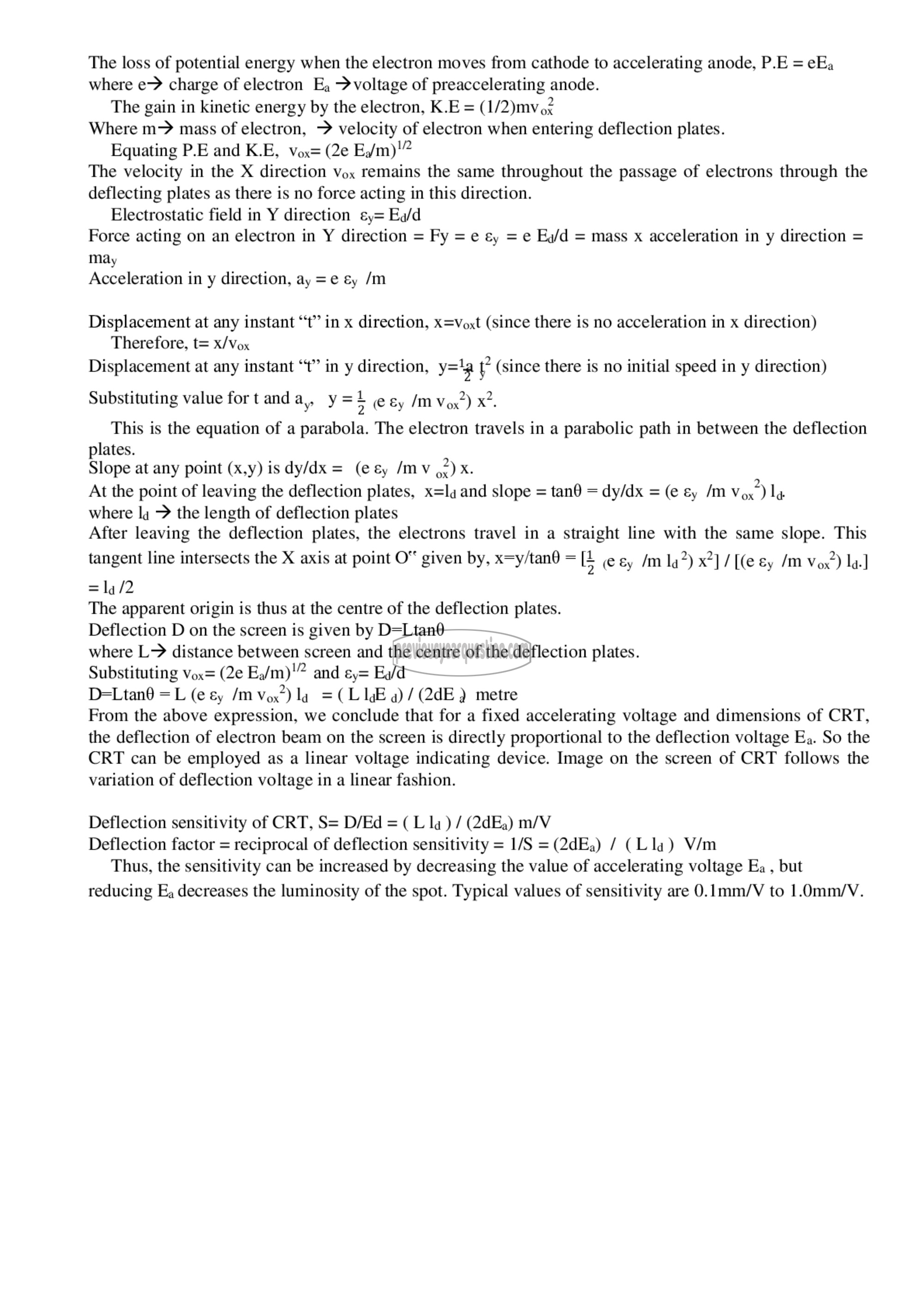APJ ABDUL KALAM TECHNOLOGICAL UNIVERSITY Previous Years Question Paper & Answer
Semester : SEMESTER 4
Subject : Measurements and Instrumentation
Year : 2018
Term : MARCH
Scheme : 2015 Full Time
Course Code : EE 208
Page:25
The loss of potential energy when the electron moves from cathode to accelerating anode, P.E = eEa
where e> charge of electron E, >voltage of preaccelerating anode.
The gain in kinetic energy by the electron, K.E = (1/2)mvo?
Where m> mass of electron, > velocity of electron when entering deflection plates.
Equating P.E and K.E, vox=(2e ۴
The velocity in the X direction vox remains the same throughout the passage of electrons through the
deflecting plates as there is no force acting in this direction.
Electrostatic field in Y direction ലട 4
Force acting on an electron in Y direction = Fy = ९ ey = ع Ed/d = mass x acceleration in y direction =
may
Acceleration in y direction, ay =e ६५ /m
Displacement at any instant “‘t’”
Therefore, t= x/Vox
Displacement at any instant
in x direction, X=Voxt (since there is no acceleration in x direction)
“op?
in y direction, y= 3 5 (since there is no initial speed in y direction)
Substituting value for t and 2, y= 0 (6 برع /m Vox) X2.
This is the equation of a parabola. The electron travels in a parabolic path in between the deflection
plates.
Slope at any point (x,y) is dy/dx = (ലേ /mv ,2)x.
At the point of leaving the deflection plates, x=la and slope ಎ 1220 = dy/dx = (€ ey /m Vox) la
where ما > the length of deflection plates
After leaving the deflection plates, the electrons travel in a straight line with the same slope. This
tangent line intersects the X axis at point റ given by, ೫೯/1200 = 6 (७६५ /1 14 2) ५2] / [(७ ey /m Vor) lad
2-2
The apparent origin is thus at the centre of the deflection plates.
Deflection D on the screen is given by 0-08
where L~> distance between screen and the centre of the deflection plates.
Substituting ೫೫ಎ (20 E,/m)!” and دبع Ea/d
D=Ltan0 = L (€ ey /m Vox?) la = ) ٢1ص ५) / (208 9 metre
From the above expression, we conclude that for a fixed accelerating voltage and dimensions of CRT,
the deflection of electron beam on the screen is directly proportional to the deflection voltage Ea. So the
CRT can be employed as a linear voltage indicating device. Image on the screen of CRT follows the
variation of deflection voltage in a linear fashion.
Deflection sensitivity of CRT, S= D/Ed = ( L la ) / (2५६०) ۷
Deflection factor = reciprocal of deflection sensitivity = 1/5 = (201) / (Lla) V/m
Thus, the sensitivity can be increased by decreasing the value of accelerating voltage Ea , but
reducing E, decreases the luminosity of the spot. Typical values of sensitivity are 0.1mm/V to 1.0mm/V.
